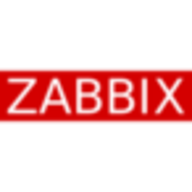

Zabbix and Grafana are two popular tools for IT monitoring and data visualization. Zabbix offers comprehensive monitoring, while Grafana stands out for its advanced graphical presentation.
Features: Zabbix users value its wide range of monitoring capabilities, efficient alert system, and ability to handle diverse environments. Grafana users highlight its exceptional data visualization, flexible dashboard creation, and intuitive interface.
Room for Improvement: Zabbix can be complex to set up, has a steep learning curve, and requires better support documentation. Grafana lacks native alerting features, relies heavily on plugins for extended functionality, and could improve its user support and documentation.
Ease of Deployment and Customer Service: Zabbix users report mixed experiences regarding deployment, noting extensive configuration efforts and reliance on community support. Grafana deployment is usually straightforward with robust community support but limited official customer service.
Pricing and ROI: Zabbix is an open-source solution, making it cost-effective, with higher initial setup costs in time and effort. Grafana offers some free features but can become expensive with Grafana Enterprise. Users often find Grafana's advanced features justify the costs for data visualization-focused environments.
My advice for people who are new to Grafana or considering it is to reach out to the community mainly, as that's the primary benefit of Grafana.
I do not use Grafana's support for technical issues because I have found solutions on Stack Overflow and ChatGPT helps me as well.
I very rarely get in touch with technical support as we don't have that option.
It is so straightforward that I have never had to use the support.
In terms of our company, the infrastructure is using two availability zones in AWS.
In assessing Grafana's scalability, we started noticing logs missing or metrics not syncing in time.
Zabbix is very scalable and lightweight.
Zabbix has high scalability.
I would rate its scalability ten out of ten.
When something in their dashboard does not work, because it is open source, I am able to find all the relative combinations that people are having, making it much easier for me to fix.
Once you get to a higher load, you need to re-evaluate your architecture and put that into account.
The product has been stable.
Zabbix is very scalable and lightweight.
Zabbix is quite stable, and we haven't had any problems with Zabbix itself.
I think the stability of Zabbix is around five to six on a scale of ten, where ten is the best and one is the worst.
It would be better if they made the technology easy to use without needing to read extensive documentation.
Grafana cannot be easily embedded into certain applications and offers limited customization options for graphs.
I would want to see improvements, especially in the tracing part, where following different requests between different services could be more powerful.
The only issue I can note is that it's Linux-based, and Linux documentation is not the best.
The potential and customization is a little difficult because you have to learn scripts.
In an enterprise setting, pricing is reasonable, as many customers use it.
The costs associated with using Grafana are somewhere in the ten thousands because we are able to control the logs in a more efficient way to reduce it.
Zabbix is providing everything free of cost.
It is literally free.
Users can monitor metrics with greater ease, and the tool aids in quickly identifying issues by providing a visual representation of data.
Its alerting feature is effective because it allows me to set thresholds to send an email if a certain threshold is met.
It's definitely useful for monitoring, alerting, logs, and analysis.
If disk usage surpasses a threshold, say 70%, I receive alerts and can take proactive action.
Zabbix has a lot of features, including monitoring, status updates, and collecting information telemetry from storages and servers as well.
Zabbix is Linux-based open-source software, and the main use case is to reduce costs.
| Product | Market Share (%) |
|---|---|
| Grafana | 3.6% |
| Zabbix | 2.5% |
| Other | 93.9% |


| Company Size | Count |
|---|---|
| Small Business | 13 |
| Midsize Enterprise | 8 |
| Large Enterprise | 24 |
| Company Size | Count |
|---|---|
| Small Business | 56 |
| Midsize Enterprise | 23 |
| Large Enterprise | 34 |
Grafana is an open-source visualization and analytics platform that stands out in the field of monitoring solutions. Grafana is widely recognized for its powerful, easy-to-set-up dashboards and visualizations. Grafana supports integration with a wide array of data sources and tools, including Prometheus, InfluxDB, MySQL, Splunk, and Elasticsearch, enhancing its versatility. Grafana has open-source and cloud options; the open-source version is a good choice for organizations with the resources to manage their infrastructure and want more control over their deployment. The cloud service is a good choice if you want a fully managed solution that is easy to start with and scale.
A key strength of Grafana lies in its ability to explore, visualize, query, and alert on the collected data through operational dashboards. These dashboards are highly customizable and visually appealing, making them a valuable asset for data analysis, performance tracking, trend spotting, and detecting irregularities.
Grafana provides both an open-source solution with an active community and Grafana Cloud, a fully managed and composable observability offering that packages together metrics, logs, and traces with Grafana. The open-source version is licensed under the Affero General Public License version 3.0 (AGPLv3), being free and unlimited. Grafana Cloud and Grafana Enterprise are available for more advanced needs, catering to a wider range of organizational requirements. Grafana offers options for self-managed backend systems or fully managed services via Grafana Cloud. Grafana Cloud extends observability with a wide range of solutions for infrastructure monitoring, IRM, load testing, Kubernetes monitoring, continuous profiling, frontend observability, and more.
The Grafana users we interviewed generally appreciate Grafana's ability to connect with various data sources, its straightforward usability, and its integration capabilities, especially in developer-oriented environments. The platform is noted for its practical alert configurations, ticketing backend integration, and as a powerful tool for developing dashboards. However, some users find a learning curve in the initial setup and mention the need for time investment to customize and leverage Grafana effectively. There are also calls for clearer documentation and simplification of notification alert templates.
In summary, Grafana is a comprehensive solution for data visualization and monitoring, widely used across industries for its versatility, ease of use, and extensive integration options. It suits organizations seeking a customizable and scalable platform for visualizing time-series data from diverse sources. However, users should be prepared for some complexity in setup and customization and may need to invest time in learning and tailoring the system to their specific needs.
Zabbix is an open-source monitoring software that provides real-time monitoring and alerting for servers, networks, applications, and services.
It offers a wide range of features including data collection, visualization, and reporting.
With its user-friendly interface and customizable dashboards, Zabbix helps organizations ensure the availability and performance of their IT infrastructure.
We monitor all Application Performance Monitoring (APM) and Observability reviews to prevent fraudulent reviews and keep review quality high. We do not post reviews by company employees or direct competitors. We validate each review for authenticity via cross-reference with LinkedIn, and personal follow-up with the reviewer when necessary.